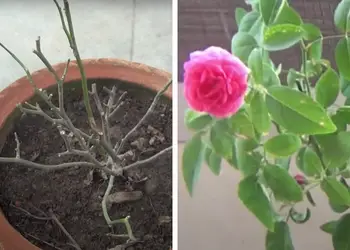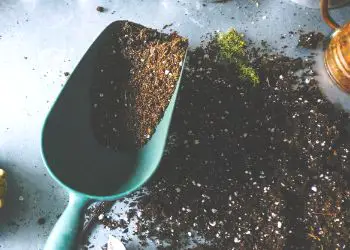There are a variety of reasons why your miniature rose might begin to degrade and eventually appear lifeless. But not all is lost. I’m going through how to bring a mini rose plant back to life in this article. So walk through the steps with me and we’ll revive your mini rose!
Let’s start with a quick summary, then we’ll go through what to do in two scenarios. First, if the plant simply needs some TLC, then I’ll go through if the plant looks like it’s too far gone.
To revive a miniature rose, prune the rose back to the basic roots and lowest buds. Then, add fresh soil. Or if the rose is in really bad shape, then completely repot it with new soil – adding in nutrient-rich soil. Water well and place it in the sun for at least 6 hours per day. Fertilize it monthly.
Let’s explore how to bring a mini rose plant back to life a little further because some might seem too far gone. But that’s not necessarily the case.
How to revive a mini rose plant that is on the decline
For roses that are simply looking a little limp and lifeless, but still have some greenery around the stems and it’s trying to keep going, then these are the simple steps to follow.
🌹 STEP 1. Prune the miniature rose bush to remove dead or dying stems back to the bare minimum to give it a fresh start
🌹STEP 2. Add fresh soil, remove it from the container if necessary and give it a new loamy soil mix
🌹 STEP 3. Place in a sunny spot for around 6 hours per day
🌹 STEP 4. Give it some water often, so that the soil is damp but not soaking
🌹 STEP 5. Fertilize monthly for the first few months, particularly if it’s around the start of Spring
🌹 STEP 6. Pruning, dead or dying stems, or stems and canes that are rubbing
🌹 STEP 7. watching out for and dealing with pests that could damage the new growth
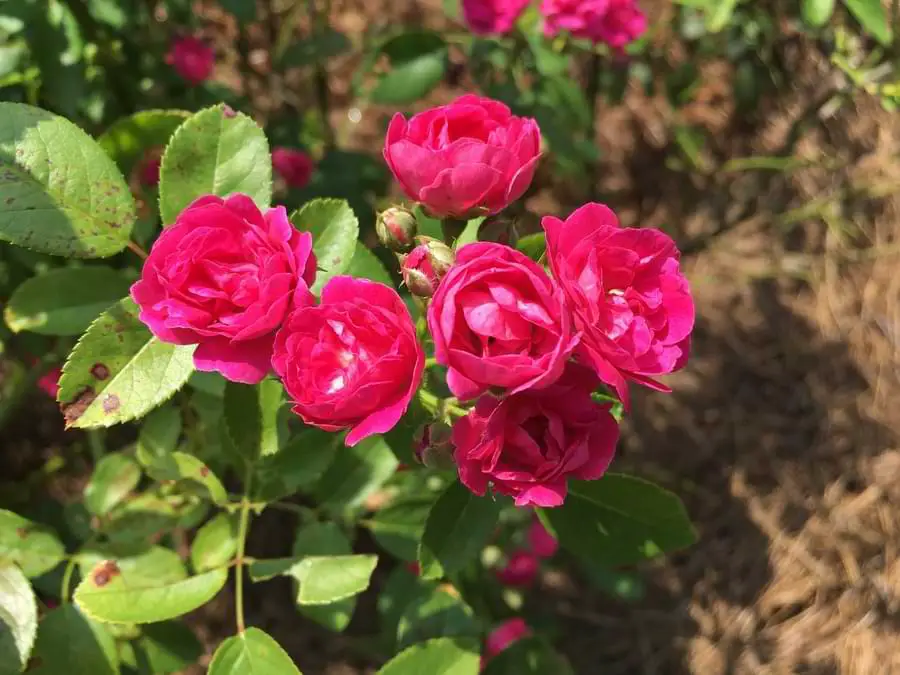
That’s the summary needed to bring a mini rose plant back to life, but here are some of the details if you’re simply keen to revive the rose. I’ve added more steps below too.
Step 1: Prune the miniature rose
Pruning the miniature rose bush: First, cut away any dead or diseased wood from the plant using sharp, clean shears.
Also, remove any rose stems that are spindly or growing in the wrong direction. You can also trim back any long branches to encourage new growth.
Cut the stems at a 45-degree angle just above a set of leaves. Or a new growth point.
Step 2: Add fresh soil
Once you’ve pruned the plant, it’s time to replant it in fresh soil. Be sure to use a well-draining potting mix specifically designed for roses.
Adding some compost, nitrogen, bone meal, and other nutrients can also give it a boost. Water well.
Read about what I use as my favorite rose compost.
Step 3: Place in a sunny spot
Roses need at least 6 hours of sunlight each day, so be sure to place your plant in a sunny spot. However, too much direct sunlight can scorch the leaves, so you may need to experiment to find the perfect location.
Step 4: Water regularly
Water the plant deeply, until water runs out of the drainage holes at the bottom of the pot. Let the soil dry out completely between waterings. Here’s more on watering roses. As well as watering roses in hot weather.
Beyond that, water your miniature rose bush once a week at the very least, making sure the soil is evenly moist but not soggy.
An easy way to tell if your plant needs water is to stick your finger into the soil about half an inch or so – if it’s dry, it’s time to water.
If the leaves of your plant start to turn yellow, that’s a sign that it’s getting too much water. Allow the soil to dry out a bit and cut back on watering until the leaves return to their normal color.
Step 5: Fertilize regularly
It’s a good idea to fertilize your mini rose every few weeks during the growing season. Use a fertilizer specially formulated for roses, and follow the instructions on the packaging.
Over-fertilizing can be just as harmful as underwatering, so be sure not to go overboard.
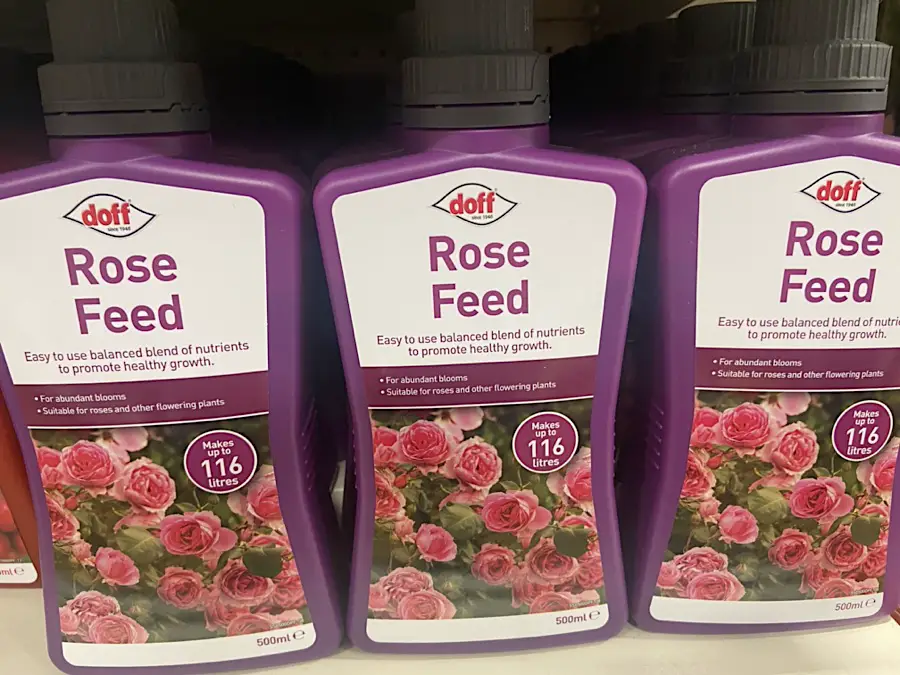
Step 6: Prune regularly to keep your mini rose healthy
Pruning your mini rose bush is an important part of keeping it healthy and vibrant at all times, not just bringing a mini rose plant back to life.
I wrote an entire article on pruning your miniature roses, it’s definitely worth reading.
But here I’ll essentially say that to keep your miniature rose bush looking its best, you should prune it regularly.
This means cutting away dead, diseased, or dying stems. As well as any stems that are crossing or rubbing against each other. Cut them back to just above where they branch off from the main stem.
Pruning also encourages new growth, so it’s a good way to keep your miniature rose bush looking full and healthy.
Step 7: Watch for pests and diseases
Unfortunately, roses are susceptible to a number of pests and diseases. The most common pests are aphids, spider mites, and Japanese beetles. And diseases tend to be black spot and powdery mildew.
Here’s what to keep a lookout for around your roses:
- Aphids are small, soft-bodied insects that congregate on the new growth of roses. They suck the sap out of the plant, which can weaken and even kill it. You can read more about that in my article about dealing with aphids on miniature roses.
- Spider mites are tiny insects that spin webs on the undersides of rose leaves. They suck the chlorophyll out of the leaves, which causes them to turn yellow and eventually die.
- Japanese beetles are shiny, black-and-copper-colored insects that skeletonize rose leaves by eating the tissue between the veins.
If you see any of these pests on your miniature roses, you can remove them by hand or use insecticidal soap. There are other methods to remove aphids too.
And those are the 7 steps that bring a mini rose plant back to life! So now here’s what to do if it looks completely too far gone!
How to bring a mini rose back to life …that looks completely dead
Beyond just needing to be revived, some roses might need a full-scale treatment to breathe new life into them.
This is mainly just more intense than the reviving steps above…
Just keep in mind that some mini roses can become too far gone…
🌹 If during the time when you remove the rose from the pot, you see that most (if not all) of the roots are rotten, then still try, but …just know that it may be too late.
🌹 If your rose looks completely bare and lifeless. with almost completely brown spindly stems, then it will need a completely new container transplant and greater amounts of nutrient help.
Follow the steps above for pruning in the same way, but change the step where you simply add new soil., you will need to completely repot the plant instead.
Here’s a miniature rose that looks too far gone. So I’m going to show how I revive it.
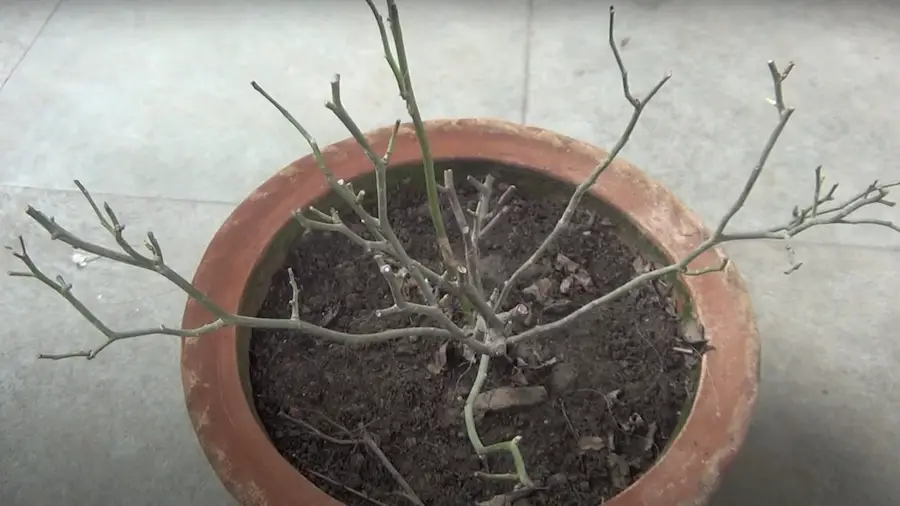
Step 1: Removing the entire rose plant
First, soak the container fully to loosen the soil. You can then ensure you’re not ripping roots apart by trying to free the plant from dry soil. It’s perhaps a little messier, but should come away nice and easily.
Once soaked and the soil removed, it’s time to replace the entire soil in the container.
Step 2: Completely replace the soil
You will need to go out and buy new potting soil or mix your own with compost. Be sure to use a well-draining mixture.
Fill the container up completely to the top around the rose bush, including the rootstock at the base. Tamp it down as you go to avoid any air pockets.
You can also add a dry nutrient mix to the soil of your choice to help the plant revive. This could be some bone meal, rose food, or other organic matter. You could also add more nitrogen-based nutrients to the soil for a growth boost – but make a soil test first
Read about how to mix the best loam soil for mini roses here.
Then you can follow the steps outlined above. When watering, also consider adding organic matter like compost tea or liquid kelp. This will give the plant an extra boost as it revives.
Liquid kelp is a fertilizer that will stimulate speedy, vigorous, and natural root growth. It improves mineral uptake. It’s ideal for any soil type and is natural to use. For a starting phase, or to revive plants then liquid kelp is beneficial.
Now that you have replaced the soil, keep a watch over your rose and you should see it slowly start to revive.
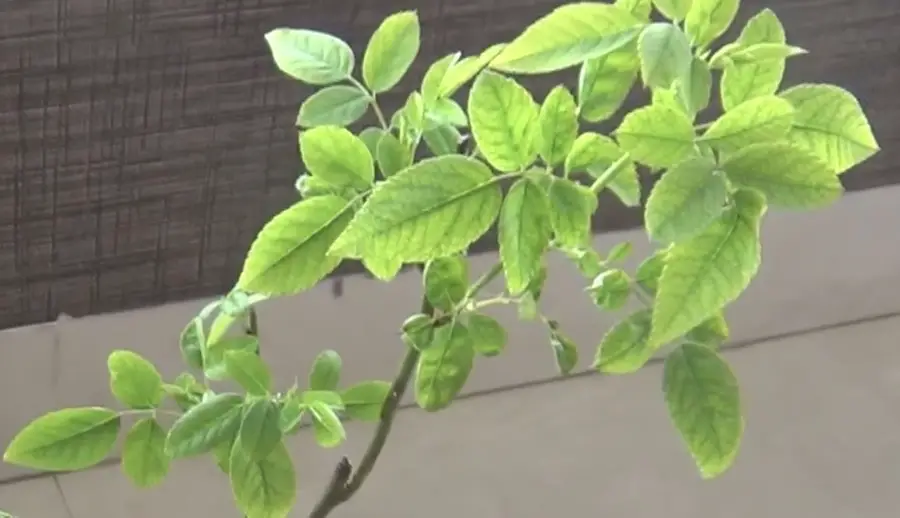
How long does a mini rose take to bring back to life?
In terms of how long this process will take, it really depends on how “dead” the plant was to start with.
If it only lost a few leaves and most of its stems are still green, then it will likely take a couple of weeks for things to start happening.
To bring a mini rose plant back to life, if most of the plant is brown and withered, then it may take a month or even a few months before you see any new growth. Of course, all this does depend on aspects like temperature and season.
The general timeline for a completely bare mini rose is something along these lines.
- 10 – 14 Days – New leaf growth, some new buds appearing.
- 3 – 5 weeks – New flowers should start to appear
- 5 – 7 weeks – a more bushy appearance, lots of additional blooms
- 3 – 5 months – You should now see a fully blooming, fully revived mini rose
So this is what to expect in terms of how long it takes to bring a mini rose plant back to life. But what do you need to do to help the process along?

Bring a mini rose plant back to life ~ More roses help 🌹
I hope this has helped. Don’t despair if your miniature rose looks like a withered old twig, you can still bring a mini rose plant back to life.
It just takes a little bit of effort, some good quality mini rose food and water, and patience. With the right care, your miniature rose will be blooming in no time and you’ll feel great about salvaging your plant!
Be sure to check out my tools and resources page and peruse my other articles for more rose help!

Hi, I’m Michael. My passion for roses was sparked a few years ago after visiting a dedicated community rose garden. So Rosehow.com represents my take, my learnings, and my help for anyone looking to grow, be proud of, and harvest roses.

